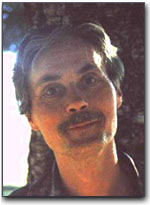
|
Exercise in Straightline Remote Sensing - Second Installment
What if there is no vase at the location where the mirror was pointing? What if there was a horse standing at that exact location? It seems that the result of the viewing must have been wrong! Right? False! Whatever the viewer sees, the viewer is seeing! If the viewer sees something different from what other people are seeing, then there are several possibilities to explain this circumstance:
Any combination of above possibilities is thinkable, and does occur in real life. One should also consider the following points, which are all accepted by "traditional" mainstream science:
All this may even occur if the observation of the viewer was totally correct to begin with (which is close to impossible as it will be shown in the next installment of "Remote Sensing"). This means that the first order of business should be to gain the confidence of accepting one's perception as what they are: one's own perception. Invalidation of one's perception is a severe aggression of one's own integrity. Since invalidations have happened to a person innumerable times in the past, it is a good idea to build up a certain level of confidence before even beginning with remote viewing exercises. In any case, it is vital to figure out what may have happened when a new invalidation occurred. In addition to all this above, the viewer's observation may have been distorted if:
After confidence in one's own perception has been restored to an acceptable level, the factors f thru m must be minimized. While remote viewing, itself, is of little interest for individual liberation, per se, all of the above has very much to do with it. It seems obvious that one should be able to look through and be untouched by invalidations of any kind. And it also seems essential that one becomes able to "see things as they are," or, since this is ultimately not possible, to at least come closer to a clear perception of unfolding events. Gotamo (the "Buddha") promoted the ancient techniques of observations of things "as they are" as the most basic tool for reaching spiritual liberation. "Looking through" (Pali: vi-passana) is a practice that is finding, very fortunately, a much wider audience these days. Most remote viewing experiments will attempt to investigate a pseudo-static event, such as the existence and modalities (color, form, etc) of a vase in a room. These are pseudo-static events that are error-prone because "reality" does not contain static events-- everything is in a constant flux. At the time of remote viewing, a person is in a heightened state of awareness. In such a state, a person is dramatically more inclined to view things in a way that is closer to "reality," but which is hidden to the "common" mind. The latter is, more often than not, filtering existing perceptions to such a degree that abstractions occur which may have nothing to do with the actual observations of the person. In the "Little Purple Notebook" (PNOHTEFTU), all exercises emphasize viewing dynamic happenings in a continuous, rather than literally jumping to conclusions. For example, if the viewer sees a curved line, the perception should follow the line in a continuous, uninterrupted way. Let's say the line comes back to where the viewer started. Instead of abstracting "this is a circle," the viewer is encouraged to take the sequence of perceptions as they happened, and to begin with exploring new avenues, based on the fixed point of the curved line. The successful learning of a new skill happens through repetitive comparison of one's action with the emerging results. Therefore, instead of jumping into the stars, it is necessary to train one's skills of remote viewing in an environment in which instant feedback and gratification is possible. For this reason, the second exercise will still be carried out in the vicinity of one's current body. For additional information regarding the author, please see his web site.
 |
|
The Exercise
"See what is in front of you by using parts of the body other than your eyes. Beginning at the head, select body parts in an increasing distance from your eyes until you can see through each of your toes (there should be ten of those)."
As a sidenote, it has been scientifically shown that the
nervous system of the body can "reroute" and reinterpret
any kind of signal. For example, there are devices that vibrate
on the skin at any location of the body, and the person can learn
to "hear" without using the ears. Likewise, there has been a
crude but working experiment in which an array of mechanical
stimulators on the back of a human body can produce the "vision"
of a signal that controls the stimulators. (Both phenomena
seem to work only for persons who have learned to see or hear
earlier in life.) In short, "rerouting" nervous signals is
an established phenomenon, and originally independent of "remote
viewing" as such.
This exercise has a surprising side effect. It will flush out
the so-called "prana channels" of the body. As a side effect
of this side effect, it can prompt an opening and flushing
of the so-called "chakras," the main energy nodes within a
human body.
In short, its application is beneficial in itself, independently
of enhancing remote viewing skills. Its main purpose here is to
loosen the fixation on the eyes as a "via" for visual perceptions.
The next installment will address the different spheres or
domains of perception itself, and will start an adventure
of exploration into a probably unexpected part of this
Universe.
Until then, happy remote viewing!
|

 If the mirror in the exercise of the
If the mirror in the exercise of the